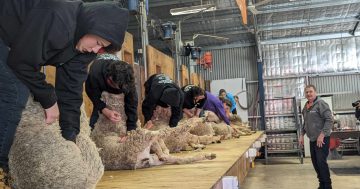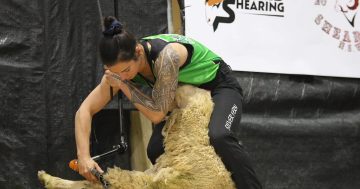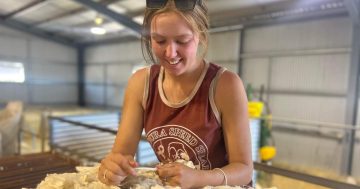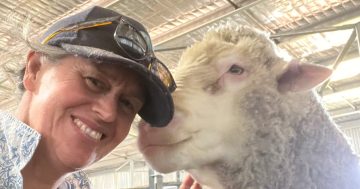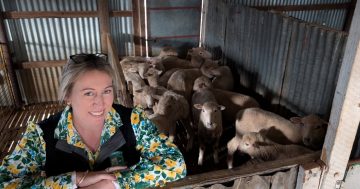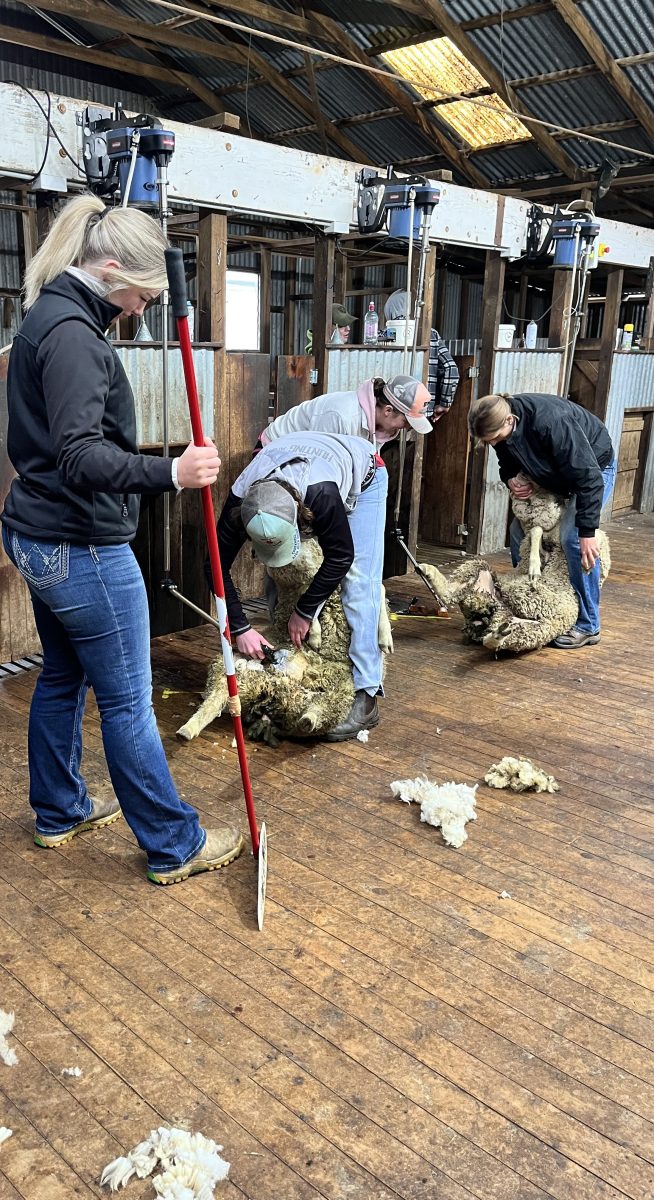
Emma McCormack watches as her Crookwell High classmates learn how to shear. The students were part of a week-long course designed to encourage more young people to enter the industry. Photo: Jo Marshall.
Emma McCormack has been around shearing sheds on the family’s farm, between Laggan and Taralga, since she was about eight.
Third generation of the Southern Tablelands farming family, travelling in the footsteps of her grandfather Brian and father Michael, it was always a place she felt at home. Under supervision, she’d help her father pen up the sheep, skirt the fleece or take her turn on the brooms.
But the Year 11 student from Crookwell High School recently went further. She was one of 12 young people in a week-long practical shearing course organised by the NSW Department of Education and TAFE NSW. It was the first group in the state to do so and was held at the Australian Agricultural Centre’s property near Crookwell.
For Emma, the practical course was the most valuable of experiences. Although she hasn’t made up her mind about a future career – even though she is doing a school-based electrical apprenticeship – she can’t imagine not having some role on the family sheep property.
She has, under supervision, shorn sheep before, but joked that her tally for the day was “not many”.
Emma said the move to get more women trained up as shearers was a good one.
“It’s good to see more girls in the sheds these days,” she said. “Things have changed, people aren’t thinking in the old ways any more.
“If you work in a good shed, you won’t get ripped. You only get ripped if you do something wrong and then someone will tell you. That’s how it should be.”
Chief Executive Officer of the Australian Agricutural Centre, Jo Marshall, said Australia was in the grip of a shearing crisis, with an estimated 400-plus additional shearers now needed to deal with the current sheep population.
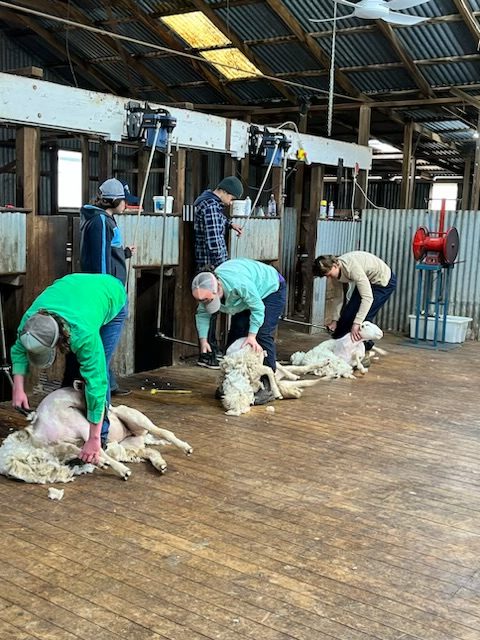
Students from Crookwell High School try their hand at the art of shearing. Photo: Jo Marshall.
She said it was crucial for more young people to fill those gaps for shearers and wool handlers in the industry.
“We not only need to provide work and skills for our youth, but we need to build our shearers back up so we don’t lose our wool industry and the amazing natural fibre that we grow and love,” she said.
Traditionally, Ms Marshall said, shearing had been a career for men, with women more likely to be handlers – but not so much these days. She said the Crookwell group was divided about 50/50.
It also wasn’t all about strength, she said. It was more how to hold the sheep and position it the best way so the shearer could do the job.
“In this course, they don’t come out of it as a gun shearer,” she said. “But they do come out with important practical learning.”
She said there was no denying it was hard work, but these days, the money was good with some shearers earning $5 a sheep compared to $2 to $3 years ago. “It is good money when you consider some gun shearers can do 300 in a day.”
Although that, she said, depended on the sheep. When the Crookwell youngsters were doing their course, they had to deal with some big white-faced suffolk sheep – which were not fans of losing their fleece.
“They had their work cut out for them with those sheep but then they had a few merinos too – and they just lie there as if they’re drugged.”
Agriculture head teacher at Wagga’s Primary Industry Centre, Rob Harris, who led the course, said it was designed to persuade more young people to pursue a career in agriculture. He said it was based on real-life experiences in the shearing shed, including sheep handling, basic shearing and crutching techniques, wool pressing and workplace practices.
“We need to start at school with a captive audience keen to get into the workforce and further their education,” he said. “Shearing is hard work and can be very taxing, however, it is a good opportunity, particularly for young people.”
More information about upcoming shearing courses in southern NSW, including at Wagga Wagga and Cootamundra, are available on the Australian Agricultural Centre website.
Original Article published by Sally Hopman on About Regional.







